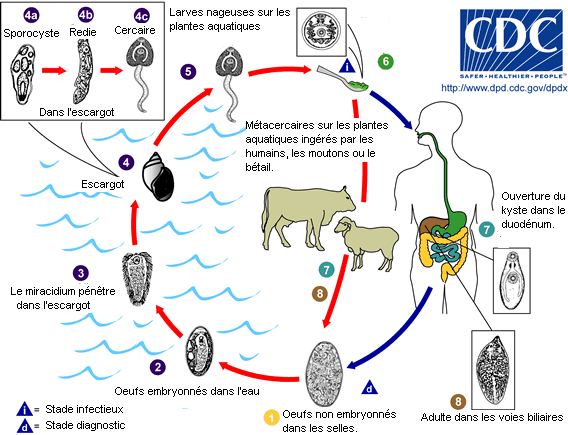Fichier:Fasciola LifeCycle(French version).gif
Fasciola_LifeCycle(French_version).gif (568 × 435 pixels, taille du fichier : 40 kio, type MIME : image/gif)
Historique du fichier
Cliquer sur une date et heure pour voir le fichier tel qu'il était à ce moment-là.
| Date et heure | Vignette | Dimensions | Utilisateur | Commentaire | |
|---|---|---|---|---|---|
| actuel | 5 mai 2007 à 13:55 |  | 568 × 435 (40 kio) | Toxicotravail~commonswiki | {{Information| |Description=Causal Agents: The trematodes Fasciola hepatica (the sheep liver fluke) and Fasciola gigantica, parasites of herbivores that can infect humans accidentally. traduction en français Life Cycle: Life cycle of Fasciola hepatica |
Utilisation du fichier
Les 4 pages suivantes utilisent ce fichier :

